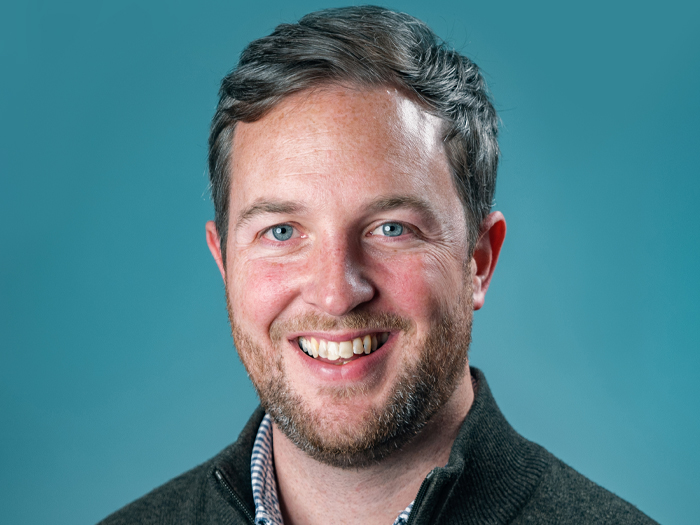8 Questions for FloodFlash’s Richard Coyle

In early January 2024, Risk & Insurance caught up with Richard Coyle, U.S. commercial director for FloodFlash.
What follows is a transcript of that discussion, edited for length and clarity.
Risk & Insurance: For starters, can you give us an overview of your company’s business model?
Richard Coyle: In essence, FloodFlash is an MGA offering parametric flood insurance.
We’re a Lloyd’s cover holder. My role in the business is U.S. commercial director.
We officially launched in the U.S. in 2023, and we are in the process of building out our distribution and footprint. I head a team of business development managers here in the U.S., and we are quickly ramping up now in 2024.
R&I: How does your technology work? How do you monitor flood activity?
RC: We’re a sensor-based parametric insurance provider. The sensor, for us, is at the heart of every policy. We think it’s the best form of technology to administer parametric flood claims, because you can put the sensor directly on the building that’s at risk.
When you get eight inches of floodwater on the sensor, you know that water is going into the building at that point, and you’ve got a loss and therefore you get the claim payment.
Whereas with other forms of technology for parametric floods, such as river gauges and tidal gauges or even satellites, they can often be quite far removed from the actual asset that you’re insuring.
For example, if you’ve got a river gauge or a tidal gauge, you could be as much as two or three miles away from the building that you are trying to protect. How do you know that that correlates very well with an actual loss at your property?
When I was in my previous role as a broker in London doing parametric business, I must have tried to sell hundreds of parametric flood policies using gauges, and they didn’t sell because that leap of faith from the customer required that the payout on the gauge two miles away was going to correlate to a loss of their building.
It was too big of a leap of faith and they couldn’t get comfortable with it. Whereas if you put a sensor on the building, it’s so tightly correlated that the customers are a lot happier and a lot more willing to invest in a policy on that basis.
R&I: You talked about the U.S. launch. When was the company first founded?
RC: Adam Rimmer and Ian Bartholomew, the two cofounders, met when they were working at RMS, the CAT modeling agency.
Between the two of them, they structured billions of dollars’ worth of parametric CAT bonds, including the CAT bonds that the New York metro put in place post-Hurricane Sandy back in 2012.
It was really the CAT bond they put in place for the New York metro system which was the spark for FloodFlash. That CAT bond was structured to pay out $200 million should water in the Manhattan Harbor reach certain heights as measured by the gauges in the harbor.
They were a big, sophisticated buyer, so they could access the CAT bond markets via their captive and buy this form of parametric flood insurance.
Adam and Ian thought, “This is cool, but wouldn’t it be great if this form of insurance was available to the mass market?” The way that they decided it was possible, and ultimately what led them to quit their jobs and set up FloodFlash, was the advances in IoT sensor-based technology.
So what we’re doing at FloodFlash is essentially taking that gauge out of the Manhattan Harbor and putting it on every single building that we insure.
As soon as we started selling policies in the UK, the big acid-test moment was the first big storm that happened in the UK back in February 2019.
It was that moment that was the true test of the sensor and how it would respond. It responded excellently and claims were paid fast, or so we thought at the time. It was within a week or two back then; now, we’ve reduced claim times to hours in some instances.
R&I: Are you primarily in the UK?
RC: We launched in the UK and are London-headquartered. But the U.S. market will quickly dwarf the UK in comparison based on we’ve seen in 2023. There was one day in June where we wrote more premium in one day than we did in our first nine months in the UK.
R&I: Can you give us an idea of the economic sectors in the U.S. where you have written premium?
RC: The first thing I would say is that we are sector-agnostic. We don’t really care what the occupancy type of a building is; it doesn’t really matter to us as it might to a traditional underwriter for property. Really, what we’re covering is the probability of flood happening at a specific site.
Now, that site could be a nuclear power plant, or it could be a sports stadium, or it could be a paper mill.
We can insure any sector.
That said, we do see more activity in certain sectors such as commercial real estate, heavy manufacturing, arts and recreation, and the hotel sector. We have also started to see a lot more interest from public entities — so, municipalities, water treatment plants, that sort of thing.
R&I: Are there any geographies that you won’t get involved in in the U.S.?
RC: Not really. In terms of how we’re set up, we can sell policies with no minimum premium in 15 states, and we can sell policies in the other 33 [contiguous] states with a minimum premium of $25,000.
Places like Hawaii and Alaska are a bit more challenging from a modeling perspective, but we can look at those deals on a bespoke basis.
R&I: Is there anything about the business or your opportunities in the U.S. that I didn’t ask you about that you wanted to express to our readers?
RC: Of all the perils, flood is the one with the biggest protection gap.
If you look at historical events in the U.S., such as Hurricane Ian in 2022, Ida in 2021, going back to Harvey in 2017: losses of $50, $60, $100 billion for Harvey, and only 20% of those were covered by insurance. Flood is probably the most difficult peril to underwrite, and it’s the reason, really, that FloodFlash was set up: to tackle the hardest one, to try and find that niche in the market, to come up with a product that solves the issue and then to grow at scale.
That’s what we’re doing in the U.S.
We’re here to provide customers, whether they’re businesses or public entities, with a solution for flood coverage where the traditional market has either turned its back completely, or the terms and conditions that are applied to the coverage offered are unpalatable for those insureds.
In terms of the sector of the market that we compete best in, it’s for businesses that are larger and have higher flood risk. The businesses that are struggling the most to get the coverage or limits they need — that’s really where we’re seeing the wins.
R&I: Are there other companies that you find yourself competing against in the U.S. market space, and how challenging is it to maybe start planning any partnerships?
RC: In terms of our competition in the U.S., looking at parametric versus the traditional flood market — which exists on a stand-alone basis — our strategy is to compete in the areas that that traditional flood market doesn’t have an appetite for.
As a parametric provider leveraging the technology that we have, we can underwrite risks more efficiently than the traditional market can. On the parametric side, there are some players in the market that can do parametric flood, but not with IoT.
Those competitors are using the gauges that I mentioned earlier, or they’re using satellite data. Our view is that sensor-based is really the only way to properly minimize basis risk in a parametric flood policy.
Where we’ve quoted against competitors using gauge and satellite data, we’ve always been the only horse left in the race, because the clients can see that sensor-based is really the most reliable way forward. &










